Marco Ruffini
Interference Detection in Spectrum-Blind Multi-User Optical Spectrum as a Service
May 27, 2025



Abstract:With the growing demand for high-bandwidth, low-latency applications, Optical Spectrum as a Service (OSaaS) is of interest for flexible bandwidth allocation within Elastic Optical Networks (EONs) and Open Line Systems (OLS). While OSaaS facilitates transparent connectivity and resource sharing among users, it raises concerns over potential network vulnerabilities due to shared fiber access and inter-channel interference, such as fiber non-linearity and amplifier based crosstalk. These challenges are exacerbated in multi-user environments, complicating the identification and localization of service interferences. To reduce system disruptions and system repair costs, it is beneficial to detect and identify such interferences timely. Addressing these challenges, this paper introduces a Machine Learning (ML) based architecture for network operators to detect and attribute interferences to specific OSaaS users while blind to the users' internal spectrum details. Our methodology leverages available coarse power measurements and operator channel performance data, bypassing the need for internal user information of wide-band shared spectra. Experimental studies conducted on a 190 km optical line system in the Open Ireland testbed, with three OSaaS users demonstrate the model's capability to accurately classify the source of interferences, achieving a classification accuracy of 90.3%.
* This is a preprint of a paper accepted and published in the Journal of Optical Communications and Networking (JOCN). The final published version is available at: https://doi.org/10.1364/JOCN.551188
ML-based handover prediction over a real O-RAN deployment using RAN Intelligent controller
Apr 14, 2024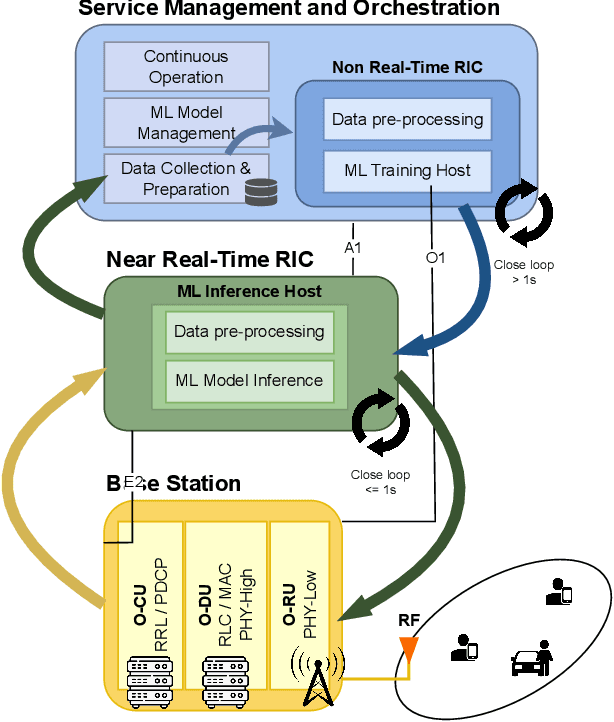
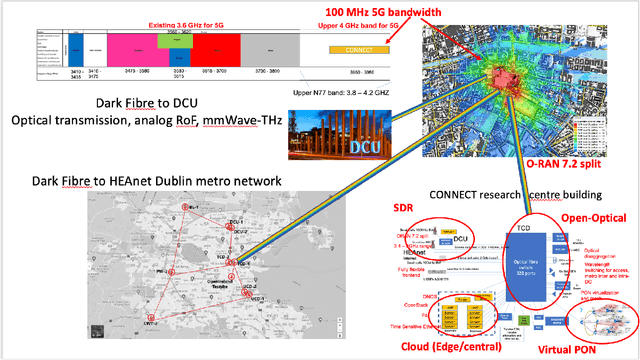
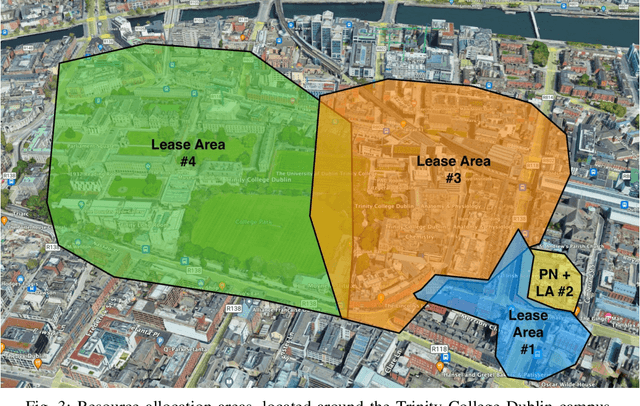
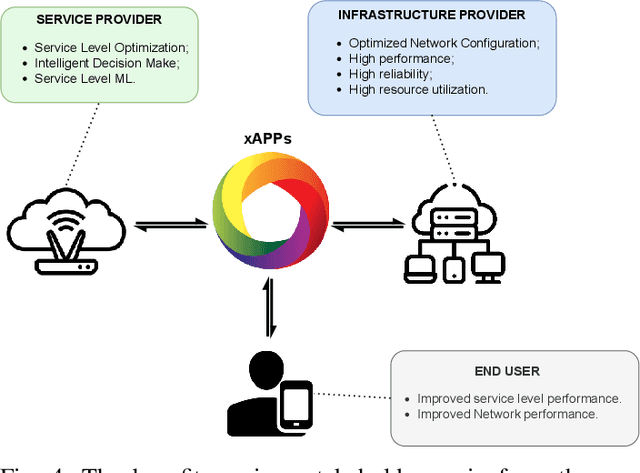
Abstract:O-RAN introduces intelligent and flexible network control in all parts of the network. The use of controllers with open interfaces allow us to gather real time network measurements and make intelligent/informed decision. The work in this paper focuses on developing a use-case for open and reconfigurable networks to investigate the possibility to predict handover events and understand the value of such predictions for all stakeholders that rely on the communication network to conduct their business. We propose a Long-Short Term Memory Machine Learning approach that takes standard Radio Access Network measurements to predict handover events. The models were trained on real network data collected from a commercial O-RAN setup deployed in our OpenIreland testbed. Our results show that the proposed approach can be optimized for either recall or precision, depending on the defined application level objective. We also link the performance of the Machine Learning (ML) algorithm to the network operation cost. Our results show that ML-based matching between the required and available resources can reduce operational cost by more than 80%, compared to long term resource purchases.
Metro Access Network with Convergence of Coherent and Analog RoF Data Services
Aug 21, 2023Abstract:Efficient use of spectral resources will be an important aspect of converged access network deployment. This work analyzes the performance of variable bandwidth Analog Radio-over-Fiber signals transmitted in the unfilled spectral spaces of telecom-grade ROADM channels dedicated for coherent signals transmission over the OpenIreland testbed.
Self-Normalizing Neural Network, Enabling One Shot Transfer Learning for Modeling EDFA Wavelength Dependent Gain
Aug 04, 2023Abstract:We present a novel ML framework for modeling the wavelength-dependent gain of multiple EDFAs, based on semi-supervised, self-normalizing neural networks, enabling one-shot transfer learning. Our experiments on 22 EDFAs in Open Ireland and COSMOS testbeds show high-accuracy transfer-learning even when operated across different amplifier types.
Experimental Demonstration of ML-Based DWDM System Margin Estimation
Feb 16, 2023


Abstract:SNR margins between partially and fully loaded DWDM systems are estimated without detailed knowledge of the network. The ML model, trained on simulation data, achieves accurate predictions on experimental data with an RMSE of 0.16 dB.
ML Approach for Power Consumption Prediction in Virtualized Base Stations
Jan 13, 2023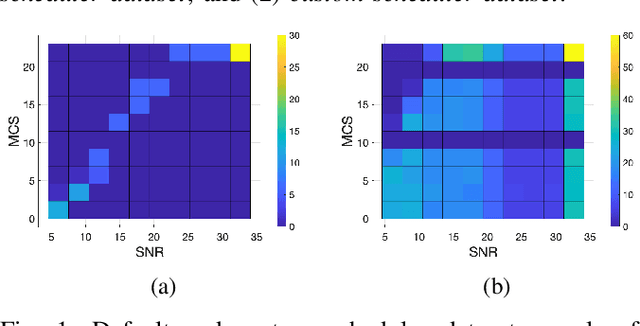
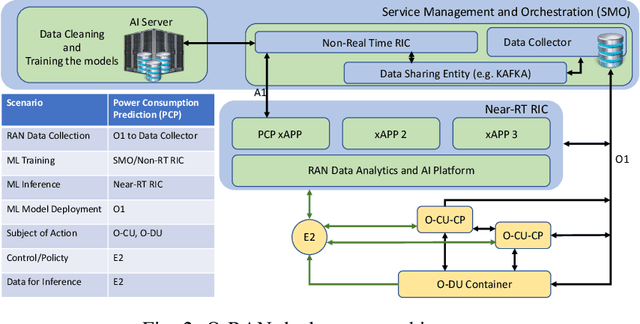
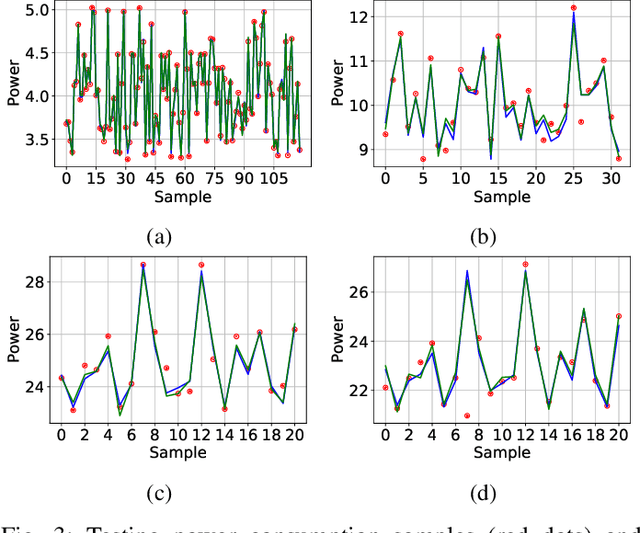
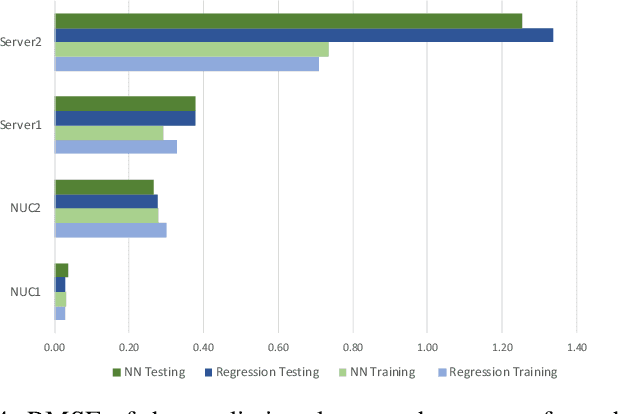
Abstract:The flexibility introduced with the Open Radio Access Network (O-RAN) architecture allows us to think beyond static configurations in all parts of the network. This paper addresses the issue related to predicting the power consumption of different radio schedulers, and the potential offered by O-RAN to collect data, train models, and deploy policies to control the power consumption. We propose a black-box (Neural Network) model to learn the power consumption function. We compare our approach with a known hand-crafted solution based on domain knowledge. Our solution reaches similar performance without any previous knowledge of the application and provides more flexibility in scenarios where the system behavior is not well understood or the domain knowledge is not available.
Fairness Guaranteed and Auction-based x-haul and Cloud Resource Allocation in Multi-tenant O-RANs
Jan 02, 2023

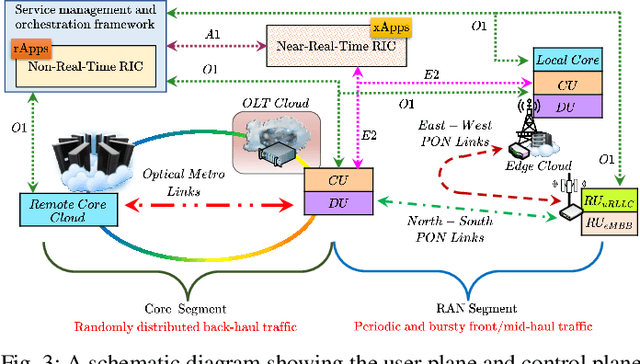
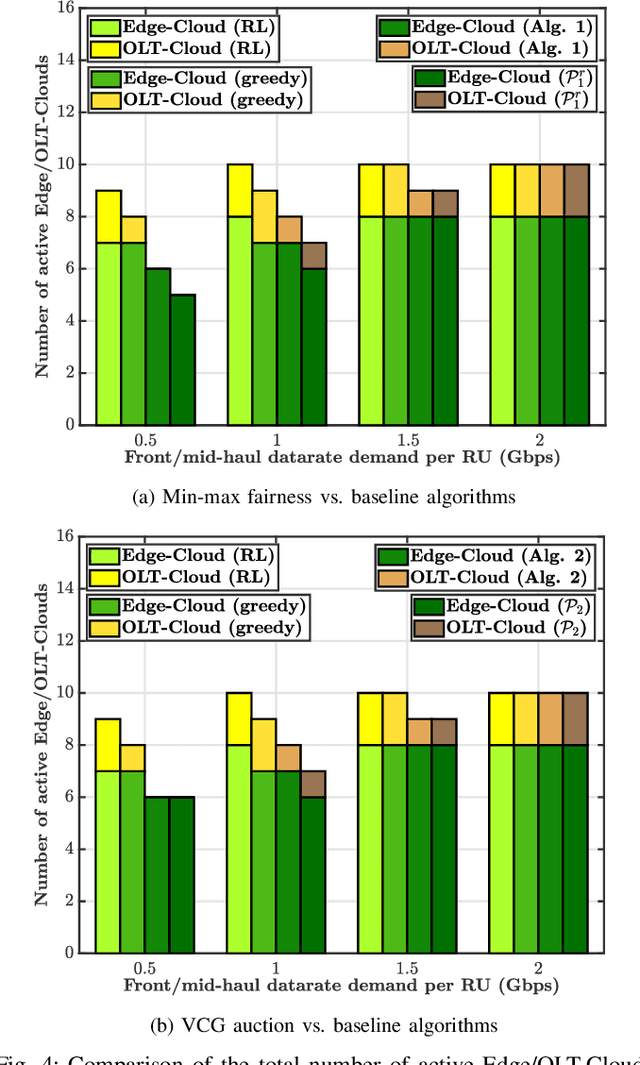
Abstract:The open-radio access network (O-RAN) embraces cloudification and network function virtualization for base-band function processing by dis-aggregated radio units (RUs), distributed units (DUs), and centralized units (CUs). These enable the cloud-RAN vision in full, where multiple mobile network operators (MNOs) can install their proprietary or open RUs, but lease on-demand computational resources for DU-CU functions from commonly available open-clouds via open x-haul interfaces. In this paper, we propose and compare the performances of min-max fairness and Vickrey-Clarke-Groves (VCG) auction-based x-haul and DU-CU resource allocation mechanisms to create a multi-tenant O-RAN ecosystem that is sustainable for small, medium, and large MNOs. The min-max fair approach minimizes the maximum OPEX of RUs through cost-sharing proportional to their demands, whereas the VCG auction-based approach minimizes the total OPEX for all resources utilized while extracting truthful demands from RUs. We consider time-wavelength division multiplexed (TWDM) passive optical network (PON)-based x-haul interfaces where PON virtualization technique is used to flexibly provide optical connections among RUs and edge-clouds at macro-cell RU locations as well as open-clouds at the central office locations. Moreover, we design efficient heuristics that yield significantly better economic efficiency and network resource utilization than conventional greedy resource allocation algorithms and reinforcement learning-based algorithms.
A Survey on Application of Machine Learning Techniques in Optical Networks
Oct 05, 2018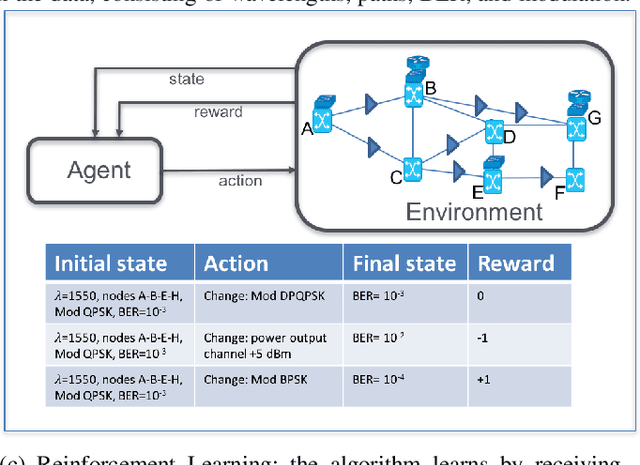
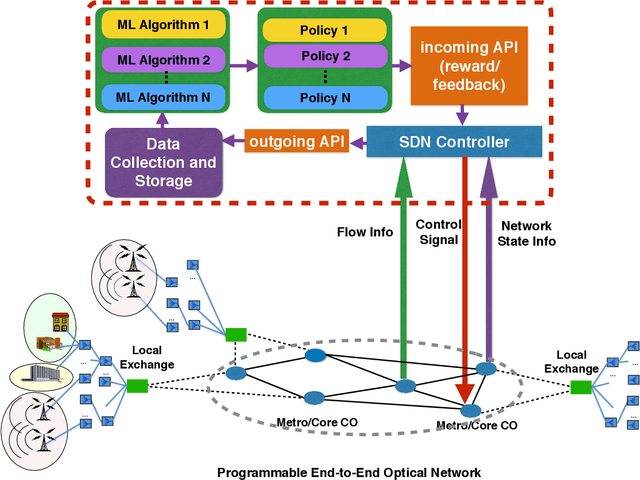
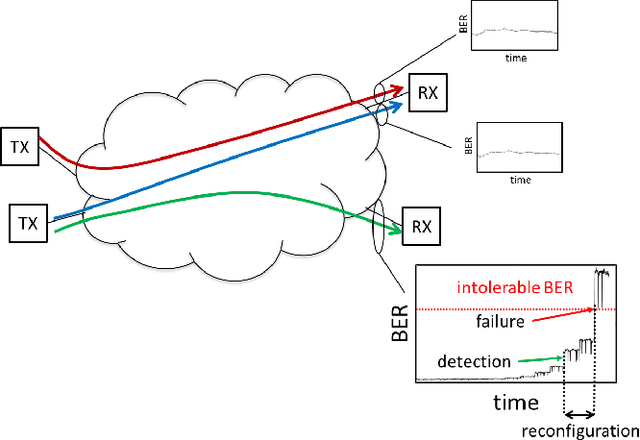
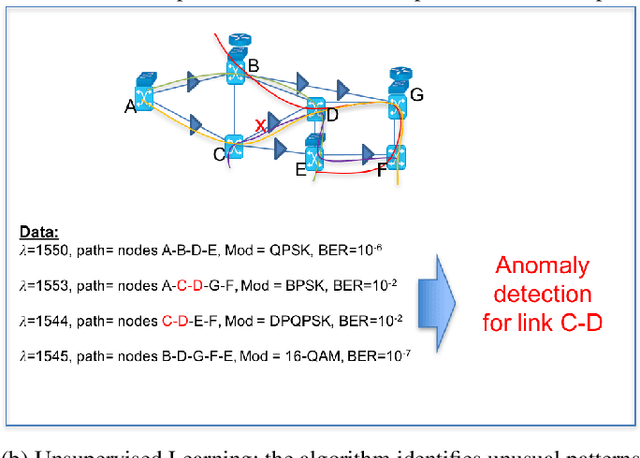
Abstract:Today's telecommunication networks have become sources of enormous amounts of widely heterogeneous data. This information can be retrieved from network traffic traces, network alarms, signal quality indicators, users' behavioral data, etc. Advanced mathematical tools are required to extract meaningful information from these data and take decisions pertaining to the proper functioning of the networks from the network-generated data. Among these mathematical tools, Machine Learning (ML) is regarded as one of the most promising methodological approaches to perform network-data analysis and enable automated network self-configuration and fault management. The adoption of ML techniques in the field of optical communication networks is motivated by the unprecedented growth of network complexity faced by optical networks in the last few years. Such complexity increase is due to the introduction of a huge number of adjustable and interdependent system parameters (e.g., routing configurations, modulation format, symbol rate, coding schemes, etc.) that are enabled by the usage of coherent transmission/reception technologies, advanced digital signal processing and compensation of nonlinear effects in optical fiber propagation. In this paper we provide an overview of the application of ML to optical communications and networking. We classify and survey relevant literature dealing with the topic, and we also provide an introductory tutorial on ML for researchers and practitioners interested in this field. Although a good number of research papers have recently appeared, the application of ML to optical networks is still in its infancy: to stimulate further work in this area, we conclude the paper proposing new possible research directions.
A Combinatorial Optimisation Approach to Designing Dual-Parented Long-Reach Passive Optical Networks
Sep 06, 2011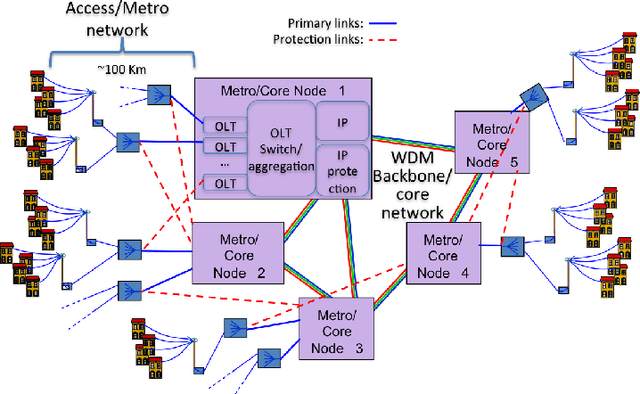
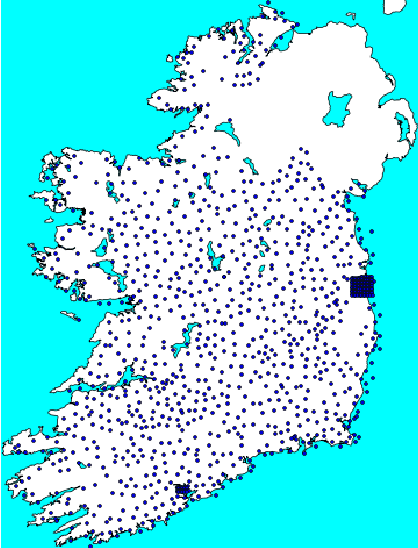

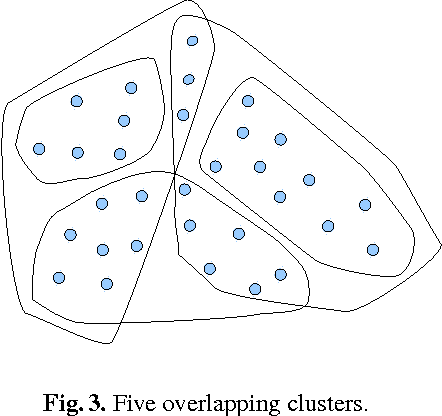
Abstract:We present an application focused on the design of resilient long-reach passive optical networks. We specifically consider dual-parented networks whereby each customer must be connected to two metro sites via local exchange sites. An important property of such a placement is resilience to single metro node failure. The objective of the application is to determine the optimal position of a set of metro nodes such that the total optical fibre length is minimized. We prove that this problem is NP-Complete. We present two alternative combinatorial optimisation approaches to finding an optimal metro node placement using: a mixed integer linear programming (MIP) formulation of the problem; and, a hybrid approach that uses clustering as a preprocessing step. We consider a detailed case-study based on a network for Ireland. The hybrid approach scales well and finds solutions that are close to optimal, with a runtime that is two orders-of-magnitude better than the MIP model.
* University of Ulster, Intelligent System Research Centre, technical report series. ISSN 2041-6407
 Add to Chrome
Add to Chrome Add to Firefox
Add to Firefox Add to Edge
Add to Edge